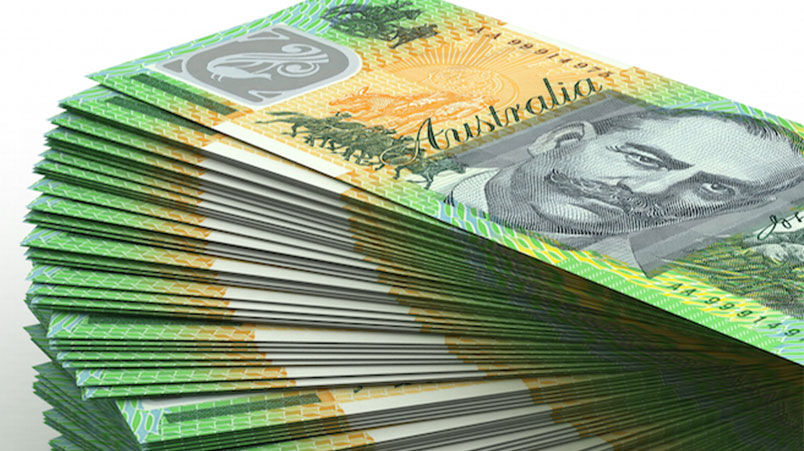Google CEO Sundar Pichai plays long game: Nine strikes pact with platforms as Fairfax ‘deal of the century’ ends

ANZ deploying cash back as the catalyst to unlock customer consent to use their transaction data to create deeper personalisation, bring in brand partners.
Nine's new deal with Google and Facebook will fund journalism – and other growth – and lead to a net gain of $30m-$40m in FY2021/22 per the publisher. That's the same net result as the Fairfax-Google "deal of the century" also brokered by Chris Janz. Described as transformative for Fairfax then, Nine says the new deal is also a paradigm shift for journalism. But some think Google is the biggest winner.
What you need to know:
- Nine said its new deal with Facebook and Google will lead to net growth between $30m and $40m in FY2021/22.
- That's broadly the same net result as the now expired Fairfax programmatic ad deal with Google.
- While some see the Fairfax deal, which expired in March, as a financial loss for Google and the "deal of the century" for Fairfax, others suggest Google has played the long game.
Peace makes plenty
Nine has struck commercial agreements with Facebook and Google which it said will lead to net growth of $30m-$40m over the 2021/22 financial year.
Those contracts, whereby Facebook will pay for news clips and articles and Google will pay for news, represent broadly the same value as the previous deal Fairfax struck with Google to sell its programmatic inventory prior to Nine’s takeover.
The Fairfax deal concluded in March, with Nine confirming it is now selling inventory in the open exchanges, and via its internal sales team.
CEO Mike Sneesby said the new contracts, a result of the news media bargaining code, would “play a role in evolving Nine to a world where the majority of our revenue is digitally led”.
Nine has also struck a deal with content discovery network Outbrain in a bid to increase revenue from promoted content. Outbrain competes with WPP’s GroupM-owned Plista.
It will enable us to invest in the model in a different way to what we could before and to invest for the long-term, because we now have another revenue line from another platform. In entertainment, we can do that ourselves. In journalism, that was much more difficult.
Same, but different
Announcing the news to staff, Sneesby thanked a handful of key players, one of whom was Chief Digital and Publishing Officer, Chris Janz.
Janz, pipped to the top job by Sneesby, was also the architect of the Fairfax-Google deal, described by some with knowledge of the arrangement as “the deal of the century” for the publisher.
But others suggest while Google’s local P&L may have taken a hit, the platform ultimately ended up quids in.
Janz, then head of Fairfax's Metro Publishing unit, brokered the pact in late 2017. Google would sell Fairfax’s premium inventory programmatically, showing what it could do in the process.
Fairfax booked guaranteed revenue against a highly uncertain backdrop, and some upside from areas where it could also sell rich media and other inventory – unless Google was so successful it could sell the lot. But it wasn’t, and the Fairfax sales team was never scaled back, as theoretically it may have been had Google torn up trees.
Instead, it piped in ads from its open ad exchange network, often of questionable quality for premium mastheads. But the tradeoff allowed Fairfax to underwrite the digital side of the business while pushing harder into subscriptions. For a time, it also helped management to stabilise the print side, widely seen as achieving the impossible. And then the Nine came along.
From Google’s end, the deal went right to the top globally, understood to have been signed off by CEO Sundar Pichai. Google hadn’t done a publisher sales deal like that before, nor has it since.
Losing, but winning
While Google’s team locally may have resented the balance sheet leakage, for $30-$40m a year the deal stopped a big chunk of Australia’s premium news inventory being hived off by AppNexus, which at the time was threatening to show the world what could be done outside of Google.
AppNexus, since subsumed by AT&T and housed within Xandr, had struck deals with News Corp as well as Fairfax and had not given up hope of architecting a coalition of publishers that could have seen Google largely shut out of the premium market.
As a result of the agreement, Fairfax went back to the Google ad stack, and additionally took on Google productivity software.
Some argue that ‘buying off’ Fairfax arguably also bought political capital, kicking the can down the road until more recent developments.
The new deal leaves Nine with guaranteed revenue – this time for content, with its programmatic inventory now in the open exchanges, but on its own terms.
Google, and Facebook, escape further regulatory action, at least for now.
Investment versus investors
While detractors of Australia’s news media bargaining code have claimed that Australia’s major masthead owners will simply pocket the cash and feed it through to shareholders, Sneesby stated otherwise:
“These deals will contribute to supporting the world-class journalism on which our business thrives and to give us the opportunity to pursue growth.”
How and where Nine focuses its new riches remains to be seen. But Sneesby’s statement to staff echoes comments made to Mi3 by former CEO Hugh Marks in late February as the bargaining code passed parliament.
Nine, “needed to find an option that enabled our business to participate in the shift of audience to digital platform consumption”, said Marks.
“It will enable us to invest in the model in a different way to what we could before and to invest for the long-term, because we now have another revenue line from another platform.
“In entertainment, we can do that ourselves. In journalism, that was much more difficult. So this is a really significant shift in the structure of the industry.”

